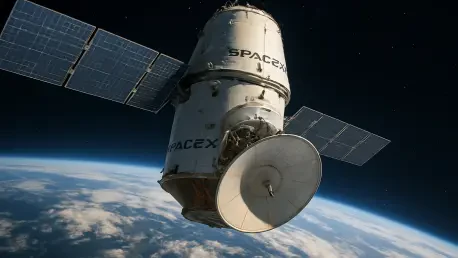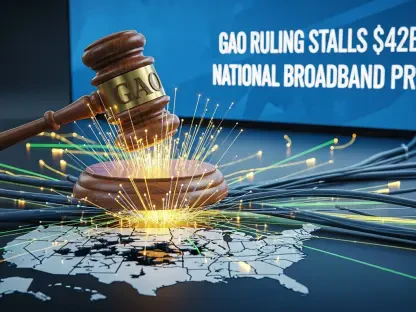In a surprising and strategic move, Amazon has opted to collaborate with SpaceX, a direct competitor in the burgeoning satellite internet industry, to expedite the launch schedule for its ambitious Project Kuiper initiative. Despite the inherent rivalry, this decision is driven by Amazon’s pressing need to comply with regulatory requirements set by the Federal Communications Commission (FCC). Amazon has committed to launching half of its planned 3,236 satellites by July 2026. With the clock ticking, the urgency to deploy satellites has spurred Amazon to team up with SpaceX, renowned for its reliable Falcon 9 rocket, to sidestep delays faced with other contracted launch providers. A key launch is slated to occur on July 16, 2025, from Cape Canaveral, Florida, aiming to send 24 additional Kuiper satellites into orbit. This collaboration emphasizes Amazon’s willingness to overcome traditional industry barriers in pursuit of accelerating its space endeavors and expanding its satellite internet offerings more rapidly.
Amazon’s Strategic Shift in Space Endeavors
The move to partner with SpaceX underscores a significant shift in Amazon’s approach to its $10 billion space project, moving away from reliance on several providers that have faced setbacks. Notably, companies such as United Launch Alliance (ULA), Arianespace, and even Amazon’s affiliate, Blue Origin, have all experienced various delays in their rocket development and launches, prompting Amazon to reevaluate its strategy. By incorporating SpaceX’s Falcon 9 into its deployment plan, Amazon seeks to leverage reliable technology that can guarantee the timely introduction of Kuiper satellites, critical to meeting both regulatory obligations and market competition. This pivot reflects an urgency not only to meet FCC deadlines but also to establish a foothold in a rapidly saturating market dominated by SpaceX’s Starlink, which boasts more than 7,855 functional satellites. For Amazon, the timely execution of Project Kuiper is not merely about meeting technical benchmarks but also positioning itself as a formidable player in the global satellite internet service domain.
Amazon’s partnership with SpaceX is particularly noteworthy given the competitive landscape of the satellite internet sector. SpaceX’s Starlink already has a significant lead, offering global connectivity through an extensive satellite constellation. By contrast, Amazon is at an earlier stage, though determined to create inroads. The choice to use SpaceX’s launch capabilities indicates a pragmatic acknowledgment of the need for speed and reliability in the space race. Moreover, the decision to move ahead with a competitor’s infrastructure illustrates a practical approach in overcoming potential technological and logistical hindrances. Amazon is banking on deploying its satellites efficiently as it strives to achieve operational status for Kuiper in early 2026, aiming to link Project Kuiper’s services with Amazon Web Services (AWS) and expand internet coverage, particularly in underserved remote regions.
Implications for Satellite Internet Competition
The introduction and expansion of Project Kuiper are highly significant for global internet access, with a focus on reaching underserved areas worldwide. Amazon’s strategy to fast-track satellite deployment indicates a commitment to creating a viable alternative to existing services. The competition between Amazon and SpaceX, therefore, presents a fascinating case of collaboration amid rivalry, with each entity potentially benefiting from the other’s resources and expertise. For customers, this competition may translate to improved services and potentially lower costs as each company vies for market dominance and strives to innovate. The rapid development of satellite infrastructure is expected to redefine connectivity standards, especially in areas traditionally neglected by conventional telecommunications.
The collaboration also puts a spotlight on how companies operating within the space sector may increasingly need to balance direct competition with strategic cooperation. As Amazon navigates the challenges of launching Project Kuiper, it concurrently underscores the broader industry dynamics where traditional competitive boundaries are being redefined. The success of this collaboration could lead to more intricate partnerships in the space sector, influencing how new technology ecosystems evolve. As Amazon pushes forward with its accelerated launch schedule, the progress of Project Kuiper will likely serve as a barometer for how rapidly the space economy can grow, driven by such unconventional alliances.
Future Outlook for Project Kuiper and Satellite Markets
Amazon’s decision to align with SpaceX represents a notable change in its approach to its $10 billion space initiative, shifting from reliance on various providers that have confronted setbacks. Companies like United Launch Alliance, Arianespace, and even Amazon’s own Blue Origin have all encountered delays in rocket development, prompting Amazon to reassess its strategy. By integrating the Falcon 9 into its deployment plan, Amazon aims to utilize reliable technology to ensure timely Kuiper satellite launches, essential for meeting regulatory demands and market competition. This strategic pivot highlights the urgency in adhering to FCC deadlines and establishing a notable presence in a rapidly saturating market led by SpaceX’s Starlink, which currently has over 7,855 operational satellites. Amazon is committed not just to meeting technical targets but to becoming a competitive force in the global satellite internet arena. This collaboration with SpaceX underscores a practical recognition of the need for swift and dependable actions in the space race.









